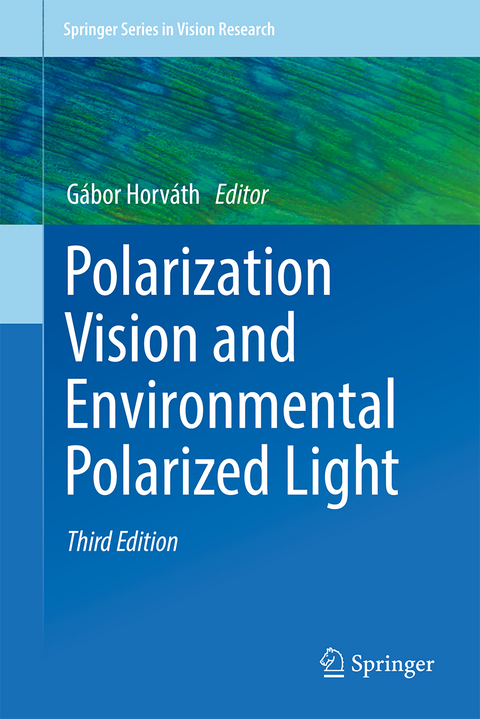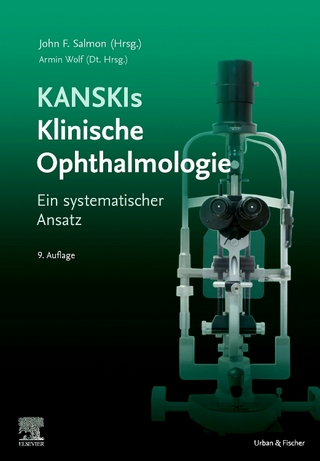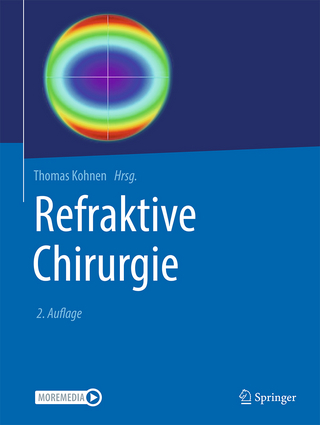
Polarization Vision and Environmental Polarized Light
Springer International Publishing (Verlag)
978-3-031-62862-7 (ISBN)
This new edition presents a state-of-the-art exploration of polarized light and polarization vision. Part I of the book examines polarization sensitivity across many animal taxa, including invertebrates and vertebrates, and it details both terrestrial and aquatic life. Part II is devoted to the description of environmental polarization with implications to animal and human polarization vision. This includes underwater polarization, polarization signals, sky-polarimetric Viking navigation and astronomical polarization. This part also examines polarized light pollution induced by anthropogenic factors, such as reflection off asphalt surfaces, glass panes, car bodies, and other man-made structures that are now known to form ecological traps for polarotactic insects. The new edition features a number of novelties, including chapters on trilobites, springtails, bats, seals, imaging polarimetry, and astronomical polarization.
Gábor Horváth was born in 1963 in Kiskunhalas, Hungary. In 1987 he received his diploma in physics from the Eötvös Loránd University in Budapest. Then he was a research assistant at the Department of Low Temperature Physics of the same university, where he investigated electrical percolation processes in granular superconductors. In 1989 he received a doctoral fellowship in the Biophysics Group of the Central Research Institute for Physics of the Hungarian Academy of Sciences (Budapest), where he developed a mathematical description and computer modelling of retinal cometlike afterimages. He obtained his Ph.D. at the Eötvös University in 1991. His thesis in physiological optics was a computational study of the visual system and optical environment of certain animals. In 1991-1992 he was a postdoctoral fellow in the Institute for Zoology of the University of Regensburg (Germany), where together with Professor Rudolf Schwind he studied the polarization patterns of skylight reflected from water surfaces and the polarotaxis of aquatic insects. Then he was a postdoctoral fellow at the Department for Biological Cybernetics of the University of Tübingen (Germany), where he measured natural polarization patterns and investigated the polarization-sensitive optomotor reaction in water insects together with Professor Dezsö Varjú. In 1993 he finished his postdoctoral dissertation in computational visual optics to obtain the degree Candidate for Biophysical Science awarded by the Hungarian Academy of Sciences. For this treatise he won the first International Dennis Gabor Award. Between 1996 and 2018 he was an associate professor, and from 2018 he is a professor of biophysics and leader of the Environmental Optics Labortory at the Department of Biological Physics of the Eötvös University. From 2022 he is the leader of the Astropolarimetric Research Group of the HUN-REN-ELTE Hungarian Research Network in cooperaion with the Eötvös University. His main research interests are the optics of animal eyes and the visual environment, animal polarization sensitivity, polarization characteristics of the optical environment as well as various biomechanical problems. He designed imaging polarimeters with which he records and visualizes the polarization patterns in nature. He participated on several expeditions and polarimetric measuring campaigns in Hungary as well as in the Tunisian and Namibian deserts, Finnish Lapland, North Pole, and on the Atlantic Ocean. He was three times a Humboldt research fellow in the Universities of Tübingen and Regensburg. He wrote his first Springer monograph (2004) about polarization vision in Tübingen with Dezsö Varjú. He edited and finished the second Springer monograph (2014) dealing with polarization in Regensburg. He won several Hungarian and international prizes and awards for his scientific achievements in biological optics.
Part I: Polarization Sensitivity and Vision.- Polarization Sensitivity in the Vinegar Fly, Drosophila melanogaster.- Polarization Sensitivity in Bees (Apoidea).- Polarization Vision and Orientation in Ball-rolling Dung Beetles.- Polarization Sensitivity in Desert Locusts, Schistocerca gregaria.- Polarization Sensitivity in Butterflies.- Polarization Sensitivity in Tabanid Flies.- Horsefly Polarotaxis.- Circular Polarization Insensitivity in Scarab Beetles with Circularly Polarizing Exocuticle.- Polarization Sensitivity and Polarotaxis in Springtails (Collembola).- Polarization Sensitivity, Polarotaxis and Polarization-elicited Optomotor Response in Yellow Fever Mosquitoes (Aedes aegypti).- Polarotaxis in Mayflies.- Polarization Sensitivity and Polarotaxis in Odonates (Dragonflies and Damselflies).- Polarization Vision of Crustaceans.- Polarization Sensitivity in Cephalopods - Cuttlefish as Model Animals.- Polarization Sensitivity in Fishes.- Polarization Sensitivity in Amphibians: An Update.- Polarization Sensitivity in Reptiles: An Update.- Polarization Vision in Birds.- Polarization Sensitivity and Insensitivity in Bats.- Polarization Insensitivity in Harbour Seals (Phoca vitulina).- Human Polarization Sensitivity: An Update.- Vision of Trilobites and Polarized Light.- Part II: Environmental Polarization with Implications to Polarization Sensitivity and Vision.- Polarization Signals in Crustaceans and Insects.- Reflection-polarization Characteristics of Water Surfaces.- Polarized Light Pollution and Ecological/Evolutionary Traps Induced by It for Polarotactic Aquatic Insects.- Part III: Celestial Viking Navigation.- Sky-polarimetric Viking Navigation: An Extended Update.- Part IV: Astronomical Polarization.- Polarization of Sunlit and Moonlit Skies, Eclipse Skies, Solar Coronas and Kordylewski Dust Clouds.- Astronomical Polarization, Polarization-sensitive Cameras and Telescopes.
| Erscheinungsdatum | 15.10.2024 |
|---|---|
| Reihe/Serie | Springer Series in Vision Research |
| Zusatzinfo | XXVII, 833 p. 407 illus., 298 illus. in color. |
| Verlagsort | Cham |
| Sprache | englisch |
| Maße | 155 x 235 mm |
| Themenwelt | Medizin / Pharmazie ► Medizinische Fachgebiete ► Augenheilkunde |
| Naturwissenschaften ► Biologie ► Humanbiologie | |
| Naturwissenschaften ► Biologie ► Zoologie | |
| Schlagworte | Animal orientation • Animal vision • Color Vision • environmental polarized light • optical environment • Polarization patterns • polarization senstivity • vision research |
| ISBN-10 | 3-031-62862-4 / 3031628624 |
| ISBN-13 | 978-3-031-62862-7 / 9783031628627 |
| Zustand | Neuware |
| Informationen gemäß Produktsicherheitsverordnung (GPSR) | |
| Haben Sie eine Frage zum Produkt? |
aus dem Bereich


